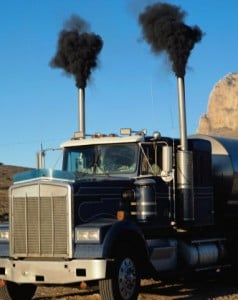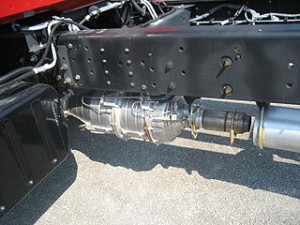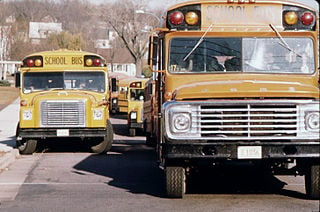Getting right to it, consider that over 300 billion miles of travel are driven on California roadways annually – one-tenth of what is driven nationally (as of late).
And that’s just driving. When you factor in all other modes – providing residents and visitors alike the means with which to move about whether by the second, minute, hour, day, week, month or year – it fast becomes apparent the impact all of this hustle, bustle and otherwise normal travel-related activity is having. On California air, meanwhile, all this mobility, motion, movement, collectively, exacts a heavy toll.

So, what does this mean in the global context? According to the California Environmental Protection Agency Air Resources Board (ARB) via its “California Greenhouse Gas Emission Inventory – 2016 Edition,” released in June 2016, as of 2014 (the latest year for which greenhouse-gas-emissions data is available), the state’s annual added GHG contribution to the world total: 441.5 million metric tons of carbon dioxide equivalent (MMTCO2e) which, if it hasn’t already become glaringly apparent, is more than most entire countries’ yearly air-released emissions and even some nations’ outputs combined.
But, it’s not just CO2 emissions alone we’re talking about here which, by the way, represents 84.3 percent of the total. Add in also other mobile and/or stationary sourced gases like methane (CH4) 9.0 percent, nitrous oxide (N2O) 2.8 percent and the high global-warming potential (High GWP) fluorinated gases of sulfur hexafluoride (SF6), hydrofluorocarbons (HFCs), perfluorocarbons (PFCs) and nitrogen trifluoride (NF3) at 3.9 percent. And the portion coming from transportation, well, that accounts for 37 percent, singly, the largest share of the state’s total. Therefore, making an ambitious, concentrated and concerted effort to reduce emissions from not only this but other mobile-source sectors is paramount. Hence the basis for Part 3.
Brief historical perspective
An oft-repeated maxim is that Californians have a love affair with the automobile. This seemingly unshakeable attraction began in earnest circa 1920. By 1943, however, the first major episode of smog was evidenced in the southern California region, particularly in and around Los Angeles.
Subsequent to this serious efforts were launched, not only to identify the source or sources, but to mitigate this smog’s existence. One need only reference the ARB’s 18-minute video presentation “Clearing California Skies” to both be apprised of the smog’s cause and to become more enlightened with regard to the kind of mitigating action taken to help address, in the southland, a scourge that, prior to it easing some, would grow to become much more problematic and widespread, and the reason behind the region having the reputation it has as smog epicenter of the U.S.
Getting (and keeping) with the program
There is no question California’s air-pollution mitigating action is getting results, so much so that, “Greenhouse gas emissions are approximately 35 million metric tons of CO2 equivalents (MMTCO2e) lower than in 2006, the year Assembly Bill 32 (AB 32, Chapter 488, Statutes of 2006) was enacted,” reports the ARB. “Numerous regulatory and incentive programs have been developed and implemented while the economy has continued to grow.”1 This groundbreaking legislation (AB 32 or the Global Warming Solutions Act), was indeed the spark behind the modern-day state GHG emissions-reduction movement getting rolling. However, if the effort is to have staying power and ultimately be resoundingly successful, stakeholders must be resolved to make a difference, this being especially true as it pertains to transportation.
There is much in the way of remediation that can and is being done to lower pollutants and emissions in air in California. Everything from implemented regulations and enacted legislation to schemes involving hybridizing and incentivizing as well as many other programs and strategies employed to make Golden State air both cleaner and healthier.
Among these are:
- The Carl Moyer Air Quality Standards Attainment Program
- Lower-Emission School Bus Program
- Charge Ahead California Program
- Light-duty-vehicle-emissions-reductions program
- Proposition 1B Goods Movement Emission Reduction Program
- On-Road Alternative Fuel Vehicle Program, South Coast
The list goes on.
So, let’s begin.
Transportation: Medium- and Heavy-Duty Vehicles – incentivization (incentive programs)

“Carl Moyer Program: The Carl Moyer Program was established in 1999 to offer monetary incentives to reduce NOx [oxides of nitrogen] emissions from diesel engines. Some of the strategies used to reduce NOx, such as replacing old diesel engines with new alternative-fuel engines, have also resulted in lower PM emissions. … The Program’s costs for reducing a ton of NOx have averaged less than $5,000 per ton, with the additional benefit of more than 320 tons-per-year of PM reductions.”2 Additionally, lawn and garden, locomotive and marine equipment, and on- and off-road vehicles can qualify. http://www.arb.ca.gov/msprog/moyer/moyer.htm

To be continued
So as to keep text to a reasonable length, information here is divided into two “Part 3” installments. Discussion will again resume in: “In 2017, do as California is: Make air cleanup, job one – Part 3 (mobile sources 2/2).” So, please be on the lookout for that.
In the meantime, more information can be had from the following sources and locations:
New Engine Standards: http://www.arb.ca.gov/msprog/onroadhd/onroadhd.htm
Low Sulfur Diesel Fuel: http://www.arb.ca.gov/fuels/diesel/diesel.htm
Waste Collection Trucks: http://www.arb.ca.gov/msprog/SWCV/SWCV.htm
Transit Agency Buses: http://www.arb.ca.gov/msprog/bus/bus.htm
School Bus Idling Restrictions: http://www.arb.ca.gov/toxics/sbidling/sbidling.htm
Transport Refrigeration Units: http://www.arb.ca.gov/diesel/tru.htm
Parts 1 and 2 can be read here and here.
Notes
- “Discussion Draft, 2030 Target Scoping Plan Update,” California Air Resources Board, Dec. 2, 2016, Executive Summary – JANUARY 2017, Preface, p. 7
- “Facts About California’s Accomplishments in Reducing Diesel Particulate Matter Emissions,” Incentive Programs Cleaner Air, California Environmental Protection Agency Air Resources Board, 2004, p. 4
- Ibid
Middle image above: Dana60Cummins
Lower image above: David Rees, U.S. EPA, catalogued and held by U.S. National Archives and Records Administration
Published by Alan Kandel